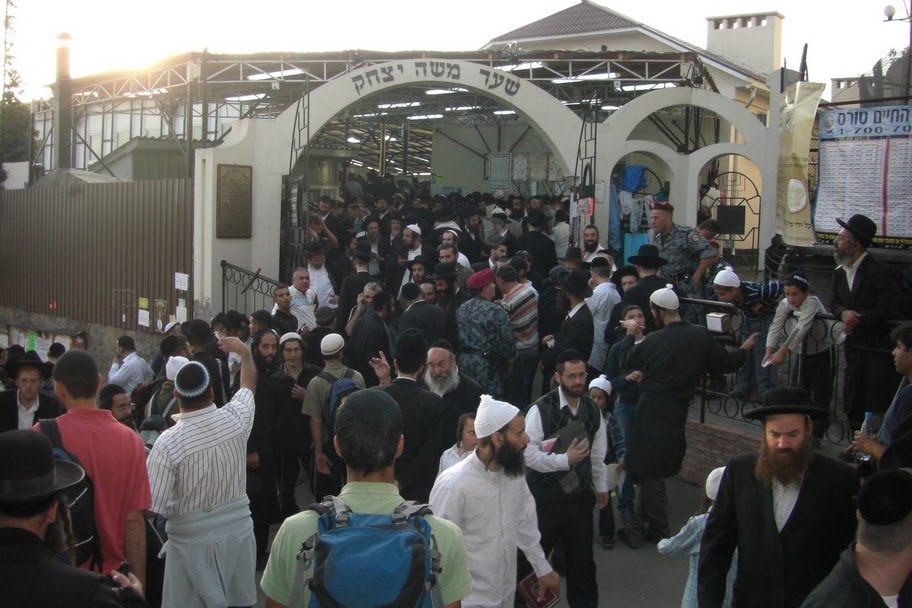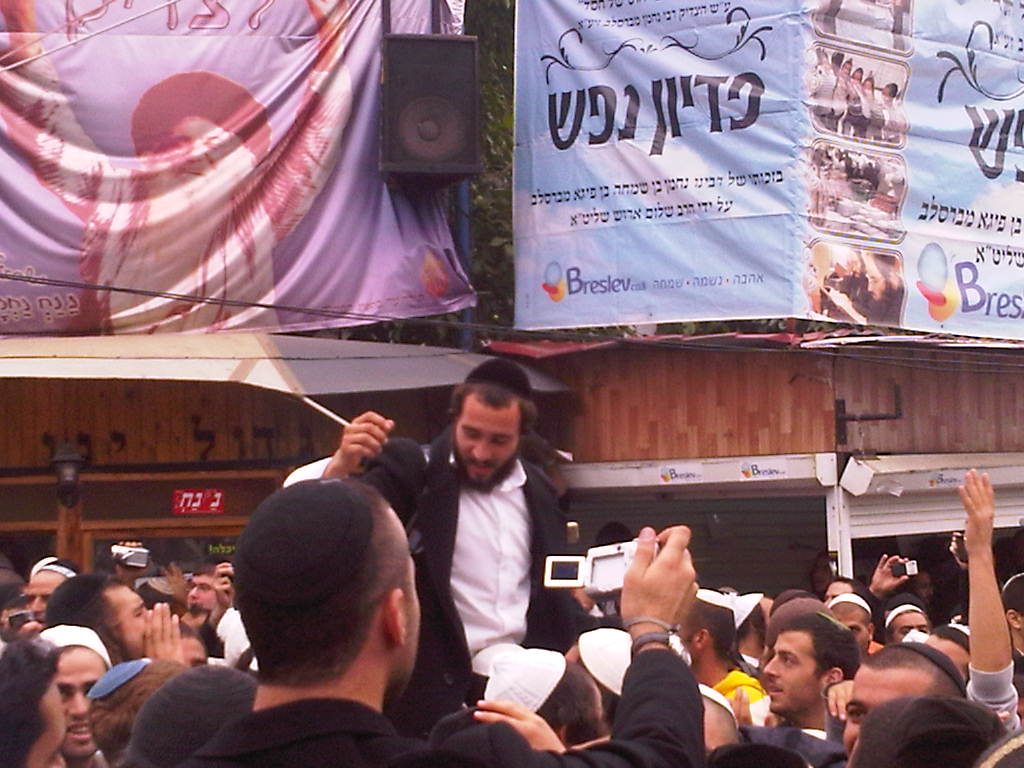It’s Rosh Hashanah, and a Ukrainian Town Is Bursting With Jewish Pilgrims
For the first time, Israel has opened a temporary consulate to help manage the chaos.

The town of Uman is in the quiet center of Ukraine, hours from the country’s major cities. It’s an unlikely place for a foreign consulate, temporary or otherwise, but Israel has good reason for opening one there this week, for the first time ever. Tens of thousands of pilgrims have just descended on Uman for Rosh Hashanah and things are about to get both pious and raucous.
The pilgrims are there to honor Rebbe Nachman, founder of the Bratslav sect of Hasidic Judaism, who is buried in Uman, where he lived just the last few months of his life. While most Hasidic sects pass leadership down between generations, says Ariel Evan Mayse, a religious scholar at Stanford University, Nachman has remained Bratslav’s figurehead. The community has a joke, says Mayse, that asks, “How many Bratslav Hasidim does it take to change a lightbulb?” The answer: “Oy, there will never be a new one like the old one.”
Nachman had promised salvation to those who visit his grave (along with giving to charity and reciting the proper psalms), but it’s not just formal members of the Bratslav group who have a soft spot for him and his final resting place. Recovering drug addicts, for example, feel recognized by his teachings on the darker aspects of existence. He was into meditation, which appeals to the otherwise secular. The Bratslav Hasidim are known for their intense, personal spirituality, which attracts many other seekers to Uman as well. It’s also common for young Israelis to travel to India after completing their mandatory army service. After that experience, many welcome the more meditative approach to religion Nachman is known for, and make the pilgrimage as well. The result is a great diversity of Jews who speak differently, dress differently, and believe differently all in one place to celebrate—but almost all men.


Others are just there to witness what has become, Mayse says, “somewhat of an event”—one often likened to Burning Man (the Gathering of the Hasidim, maybe?), known for scenes of intoxicated masses clogging the streets to dance, pray, and read scripture. Last year, the Jewish New Year brought a record 40,000 pilgrims to town—thereby increasing Uman’s population by somewhere around 50 percent. But that ballooning population, as Spring Break teaches us, brings problems. For years, Israel has sent its own police to manage the debauchery, disputes, and even physical altercations that can erupt among pilgrims and locals. This year they’ve taken the unprecedented step of opening a temporary consulate there.
Whether due to spirituality or simply spirits—there’s likely to be a lot of lost passports, and staff will be on hand to help many pilgrims get home when it’s all over. As Nachman wrote: “It’s a great mitzvah,” or good deed, “always to be happy.”














Follow us on Twitter to get the latest on the world's hidden wonders.
Like us on Facebook to get the latest on the world's hidden wonders.
Follow us on Twitter Like us on Facebook